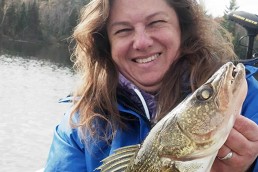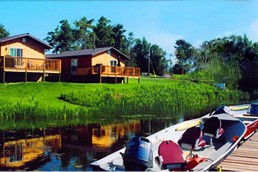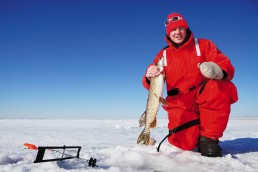Great Fishing on the Illinois River is Just Around the Corner
The Masters Walleye Circuit Tournament this year will be held on March 18 and 19, and as usual, headquartered out of the Barto Landing in Spring Valley on the Illinois River. This is a walleye and sauger tournament circuit where the best of the best compete in the season to kick off of a seven-tournament series.
This is a great event to see, and you’ll be amazed at the quality of the fish bring brought in, weather conditions permitting. But prior to the tournament day, you’ll see anglers from all over the Midwest, from Starved Rock on down to Henry, checking conditions, trying different approaches and locating fish. Anglers from all over the region start practicing up to a couple weeks before the tournament.
I can’t help but to mull over the Illinois River map produced by Phil Trager, a lifelong river anger who produced several editions of the map. I’ll check out the spots (some of which are marked as MWC winning spots from years ago) and make my own plan of attack on the river for pleasure trips within the next several weeks—I’ll also think about the presentation that may catch fish.
Under flooding conditions, a jig and minnow cannot be beat. The muddy waters will make any bait hard to see, but the live bait smell of a minnow will help the saugers zero in on the presentation and hopefully result in a hook-up. The minnow presentation is most often made closer to shore.
But when all is normal, trolling has become very popular for those in the tournament. River anglers find that they can cover a lot of water and offer an assortment of baits to find which one works best. One rig that offers two presentations seems to work well on the Illinois River. I learned about this rig from a walleye tournament angler, and it really is unique.
First, you need two #7 Original Floater Rapala lures in the same color. On one, remove the rear treble hook. Now with the lure with no rear treble hook, tie the lure on normally, using a cinch knot (see animatedknots.com).
Then, tie on a 3-foot leader to the open eyelet at the end of that lure, again using a cinch knot.
At the tail end of the leader, tie on the second Rapala using a Rapala Knot or a Loop Knot. This is a knot that is not cinched up tight to the eyelet in the nose of the lure. The loop knot allows the bait to create more wobble in the water.
What you have is the lead lure that is tied on with cinch knots hampering the wobble. It will more or less run in a tight pattern with little action. A few feet behind that will be the lure tied on with the loop knot and it will have a lot of wobble. You will basically have a non-aggressive lure and an aggressive one—a great combination.
You will have to note which lure is catching the fish. If one is doing better than the other, it’s simply a matter of changing how you tie on the second bait, with cinch knots or loop knots.
It’s the little things like this that make the difference between fishing and catching. Try different lures and different speeds when trolling. What has been more successful for me is trolling with the current of the river. But that doesn’t mean you should not try trolling into the current. Sometimes it just takes a little bit of adjustment to get everything dialed in. Using this rig on the port and starboard side of the boat will allow you to make the baits run faster and slower when trolling in a zigzag pattern.
Starting early next month, you’ll be seeing a lot of anglers on the Illinois River and it’s worth giving a try.
Seeing boats with out of state registration can mean that the anglers are practicing for the MWC tournament. Give these guys some room, but don’t be afraid to observe their locations and techniques from a distance. Try these spots later as well as their techniques and you may be into some of the Illinois River’s great sauger fishing very soon.
Visit Don Dziedzina’s blog at illinoisoutdoors.com.
MWO
SHARE THIS POST
Did you enjoy this post?
You can be among the first to get the latest info on where to go, what to use and how to use it!
Don Dziedzina
MidWest Outdoors works with more than 200 outdoor experts each year, who contribute articles based on their areas of expertise. MidWest Outdoors magazine offers more fishing and hunting articles than any other publication!



